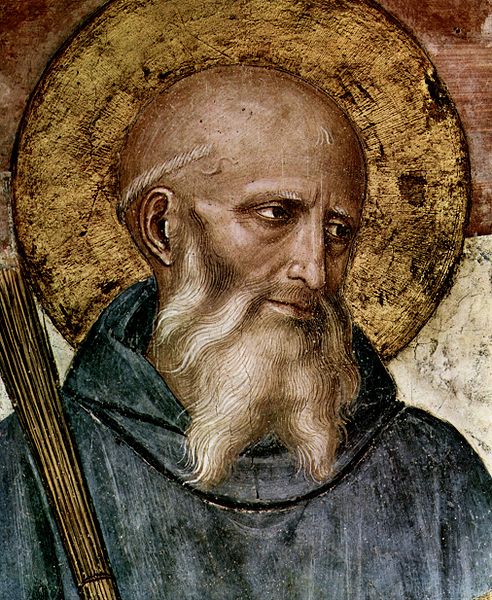Christianity in the 6th century
In 6th-century Christianity, Roman Emperor Justinian launched a military campaign in Constantinople to reclaim the western provinces from the Germans, starting with North Africa and proceeding to Italy. Though he was temporarily successful in recapturing much of the western Mediterranean he destroyed the urban centers and permanently ruined the economies in much of the West. Rome and other cities were abandoned. In the coming centuries the Western Church, as virtually the only surviving Roman institution in the West, became the only remaining link to Greek culture and civilization.
Saint Benedict, father of Western monasticism and author of Rule of St Benedict. Detail from fresco by Fra Angelico, c. 1437–46.
Mosaic of Justinian I in the church of San Vitale, Ravenna, Italy
Christians and Pagans, a painting by Sergei Ivanov
Saint Remigius baptises Clovis.
The Church of the East or the East Syriac Church, also called the Church of Seleucia-Ctesiphon, the Persian Church, the Assyrian Church, the Babylonian Church or the Nestorian Church, is one of three major branches of Nicene Eastern Christianity that arose from the Christological controversies of the 5th and 6th centuries, alongside the Miaphisite churches and the Chalcedonian Church.
Ruins of the Monastery of Mar Eliya in Mosul, Iraq in 2005. It was destroyed by ISIS in 2014.
Palm Sunday procession of Nestorian clergy in a 7th- or 8th-century wall painting from a church at Karakhoja, Chinese Turkestan
Mogao Christian painting, a late-9th-century silk painting preserved in the British Museum.
Feast of the Discovery of the Cross, from a 13th-century Nestorian Peshitta Gospel book written in Estrangela, preserved in the SBB.








